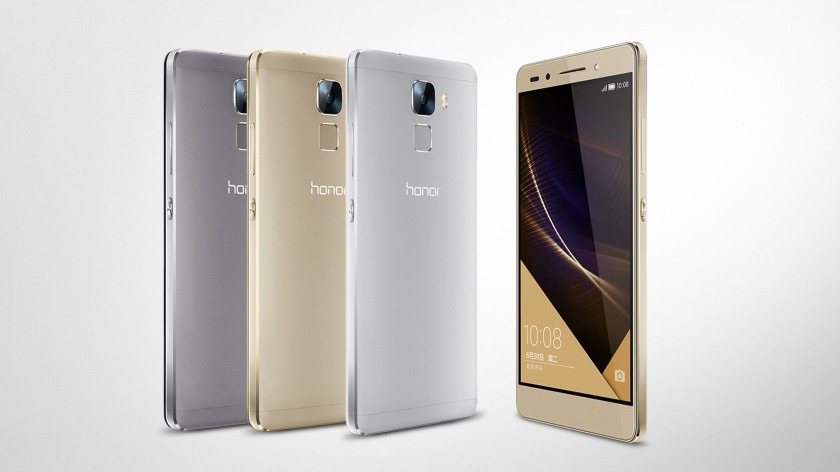Huawei Honor 7
Pros:
Metal buildFingerprint scannerHigher Megapixel count
Cons:
Single SIM in India
Xiaomi Mi4
Pros:
Solid discounts availableGreat value for moneyGood Software supportSolid performer
Cons:
No external SD card; highly constrained for the 16 GB variantPhone is a little aged
Camera
As with our previous comparisons, let’s start with a comparison of the cameras on these phones. The Xiaomi has a 13 MP camera while the Huawei packs a 20 MP camera with Phase Detection Autofocus. While we always discourage judgements based solely on megapixel count, we think these two phones should produce comparable shots with the Huawei taking the lead in some shots. Phase Detection Autofocus should help with focusing better while taking a shot on the Huawei and the Xiaomi product produces pictures that have superior colour accuracy. The cameras on these phones aren’t bound to disappoint anyone but if we had to pick a winner, it would be the Huawei. Front cameras on both these phones should be a similar story, with both phones sporting similar sensors. Pictures taken would obviously vary in different lighting conditions; overall picture quality alone wouldn’t declare a decisive ‘winner’. However, the Honor 7 does throw in a front-facing flash into the mix, which should help in low light.
Performance
Lets start with the only similarity in this regard and head towards the opposite end, here. Both the Mi 4 and the Honor 7 have 3 GB of RAM so multi-tasking and context switching should be no problem till the phone runs its course. The dissimilarities, now, are strikingly far apart. While the Mi4 is fabricated around a Snapdragon 801- a familiar, well recieved beast of a chipset, the Honor 7 decided to opt for a HiSilicon Kirin 935- an unusual choice. But, since Huawei decided to go all-in with this chip, we believe they must have good reason to. In our experience with this phone, it seemed snappy. However, we wanted to look a little deeper into the matter and our results were these: the HiSilicon Kirin 93 being an octa-core chip scores better than the Snapdragon 801 in Geekbench(3045 vs 2928) but only marginally so. In single core scores though, the Snapdragon has the HiSilicon beat by a bigger margin(1005 vs 698). To put this simply, the Snapdragon, even through it’s aged existence, will outshine the Honor 7 in a purely hardware-prowess test. However, in day-to-day usage, the naked eye won’t be able to discern the difference. One reason that might lead you into being lured towards the Mi 4 is that the Snapdragon 801 has wider support owing to its prevalence in the Android space. You shouldn’t be surprised to see occasional crashes of apps on the Honor 7 due to an app not playing well with the Kirin 935.
Screen
Screens on these phones are the least complicated bit to compare with these phones. The only difference in screens is a hair of a difference in pixel density, since the screen on the Honor 7 is 0.2 inches larger than the Mi 4. This difference will definitely not be visible to the naked eye, however and, if you prefer larger screens, pick up the Honor 7 without hesitation.
Battery
These phones house similar sized batteries and even power the same amount of pixels. So, with the two biggest variables affecting battery life being the same, the question boils down to how well the software scales on these two phones and what your workload escalates. Expect similar battery lives on both the phones.
Software and Miscellaneous
The Xiaomi includes its proprietary MIUI OS(not just a skin) which is based on Android, while the Huawei skins its build of Android with the Emotion UI. MIUI has been excellent for providing support in the past and you can expect at least a year’s worth of updates, going forward. Huawei on the other hand promises an update to Marshmallow coming soon. Other differences include a dual-SIM option on the Honor 7 and a fingerprint sensor thrown into the mix; NFC is present on the Honor 7 too; making the phone well-rounded and future-ready. The Mi4 has one sore point though- the lack of expandability in the base 16GB model means you will have a hard time dealing with insufficient on-board storage. Opt for the 64 GB model instead.
Conclusion
The conclusion here is fairly simple. At 12,999 INR the Mi4 offers great bang for your buck; with the difference between the two phones not being a vast one. However, if you want the absolute best and fingerprints sensors, NFC, microSD expansion etc. gets your heart racing and you like to stay on the bleeding edge of technology, opt in for the Huawei Honor 7 at 22,999 INR. Both phones aren’t going to leave you regretting your purchase. Let us know which phone you would want in the comments below. [table id=213 /]
